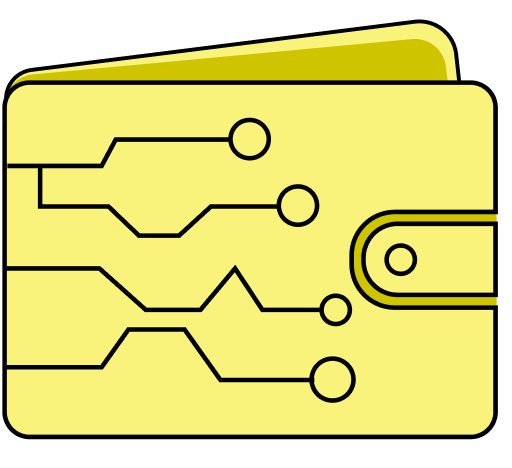
KeepKey Wallet Foto
Introduction
KeepKey is a hardware wallet built to protect digital currencies by storing them offline. As online attacks grow more sophisticated, this device gives crypto users a safer way to manage assets without exposing private keys to the internet. Its clean layout and straightforward controls make it appealing to both crypto newcomers and seasoned users. KeepKey isn’t just a storage tool – it gives users full authority over their coins by keeping access credentials local. The wallet also links with decentralized platforms, offering secure access to blockchain-based financial tools.
How KeepKey Works
KeepKey acts as an offline storage device for cryptocurrency keys. It connects to a computer via USB and requires physical interaction for every transaction, adding a strong layer of protection. Users can move, receive, or swap crypto while their private keys never leave the device.
Its primary purpose is cold storage. Unlike hot wallets that stay connected to the web, KeepKey isolates sensitive data from online threats. Before anything is sent, the device displays the transaction and waits for the user to confirm it manually.
The wide display sets it apart, showing key details like wallet addresses and transaction amounts in a clear, readable format. This reduces the risk of errors or fake address attacks.
Background and Ownership
KeepKey was developed in 2015 by Darin Stanchfield with the aim of making secure crypto storage easier for regular users. In 2017, the project was acquired by ShapeShift, a crypto trading platform, which led to tighter integration between the wallet and exchange services.
The acquisition allowed users to trade assets directly from their KeepKey devices without needing to move funds to external services. When ShapeShift later shifted toward a fully decentralized setup, KeepKey remained part of its ecosystem, continuing to receive updates and developer support.
The wallet is built on open-source software, meaning anyone can inspect the code. This increases transparency and allows outside developers to contribute improvements or report issues.
Supported Assets and System Compatibility
KeepKey can hold over 40 cryptocurrencies, including:
-
Bitcoin (BTC)
-
Ethereum (ETH)
-
Litecoin (LTC)
-
Bitcoin Cash (BCH)
-
Dogecoin (DOGE)
-
Dash (DASH)
-
A wide range of ERC-20 tokens
It integrates with several interfaces such as Electrum (for BTC) and MyEtherWallet (for ETH and tokens). Its main control panel is via ShapeShift’s web-based wallet, where users can manage portfolios and perform transactions while using KeepKey to sign everything securely.
The device works with Windows, macOS, and Linux. Installation is simple, which makes it accessible even to those with no background in crypto storage.
Security and Safety Measures
KeepKey’s strongest feature is its security approach. It removes private keys from potentially unsafe environments and keeps them on the device, disconnected from the internet. Even if the computer it’s connected to is compromised, the keys remain untouched.
Key protections include:
-
PIN Code: Each device is locked with a personal code. Wrong entries lead to time delays, stopping brute-force entry.
-
Passphrase Addition: Users can layer a custom passphrase on top of the recovery seed, offering added security even if the seed is exposed.
-
Recovery Phrase: A 12-word backup phrase is given during setup. This is the only way to recover wallet contents if the device is lost or damaged. It should be stored offline and privately.
-
Open Source: The firmware is public, allowing users and developers to examine the code for transparency and security.
KeepKey protects against digital threats, but physical security depends on the user. If someone gets both the device and the seed, they could access the funds.
Design and Ease of Use
KeepKey stands out with its large OLED screen, measuring 3.12 inches. It gives users a clear view of every transaction, making address and amount verification more comfortable.
The layout is minimal, with just one physical button to confirm actions. While some might want more navigation options, this simplicity helps prevent mistakes and makes the wallet easy to use.
Users manage their assets using ShapeShift’s browser-based interface or compatible third-party apps. Transactions are displayed on the KeepKey itself, and the user must confirm every step. This manual approval process ensures that nothing happens without the user’s permission.
Integration with ShapeShift
One of KeepKey’s standout features is how tightly it works with ShapeShift. After the wallet was acquired, it was deeply integrated into the platform, letting users trade and manage assets within one environment.
ShapeShift’s non-custodial design means it never holds user keys or funds. KeepKey fits perfectly with this model, keeping control of keys in the user’s hands at all times.
Users can also access decentralized tools like DeFi platforms directly through ShapeShift, with KeepKey acting as the secure signing device. This means crypto trading and management can all happen in one place without sacrificing security.
How It Compares to Other Wallets
KeepKey often comes up in conversations alongside two other big names: Ledger and Trezor.
-
Ledger offers support for more coins and includes Bluetooth, but it’s closed-source, and its key recovery service has raised privacy concerns.
-
Trezor is open-source and feature-rich, but its smaller screen can make confirming transactions less user-friendly.
-
KeepKey offers a large, easy-to-read screen and simple controls, making it ideal for people who want to manage their crypto without complications. However, it supports fewer tokens than Ledger and doesn’t update as frequently.
Each wallet suits different user needs. KeepKey focuses on usability and transparency, which appeals to those who value simplicity and security over broad coin coverage.
Updates and Community Activity
The KeepKey development team continues to release firmware updates that enhance features and patch bugs. Updates are applied via ShapeShift, and in some cases may require re-entering the recovery phrase, so it’s important for users to store that safely.
Although the KeepKey community is smaller compared to Ledger and Trezor, it’s active. Users share experiences, ask for help, and submit suggestions through Discord, GitHub, and other forums.
The open-source model encourages independent developers to help improve the wallet, check for bugs, and keep the platform honest. This community-driven model adds credibility and helps maintain user trust.
Conclusion
KeepKey is a solid option for anyone looking to protect crypto assets without dealing with complicated setups. Its simple layout, offline security, and integration with ShapeShift make it a practical choice for managing popular cryptocurrencies safely.
Though it lacks support for some lesser-known tokens and updates less frequently than others, its balance of usability, transparency, and control appeals to many users. As crypto adoption grows, wallets like KeepKey will continue playing a key role in keeping digital assets safe and in the hands of their rightful owners.












 Twitter
Twitter
 Telegram
Telegram
